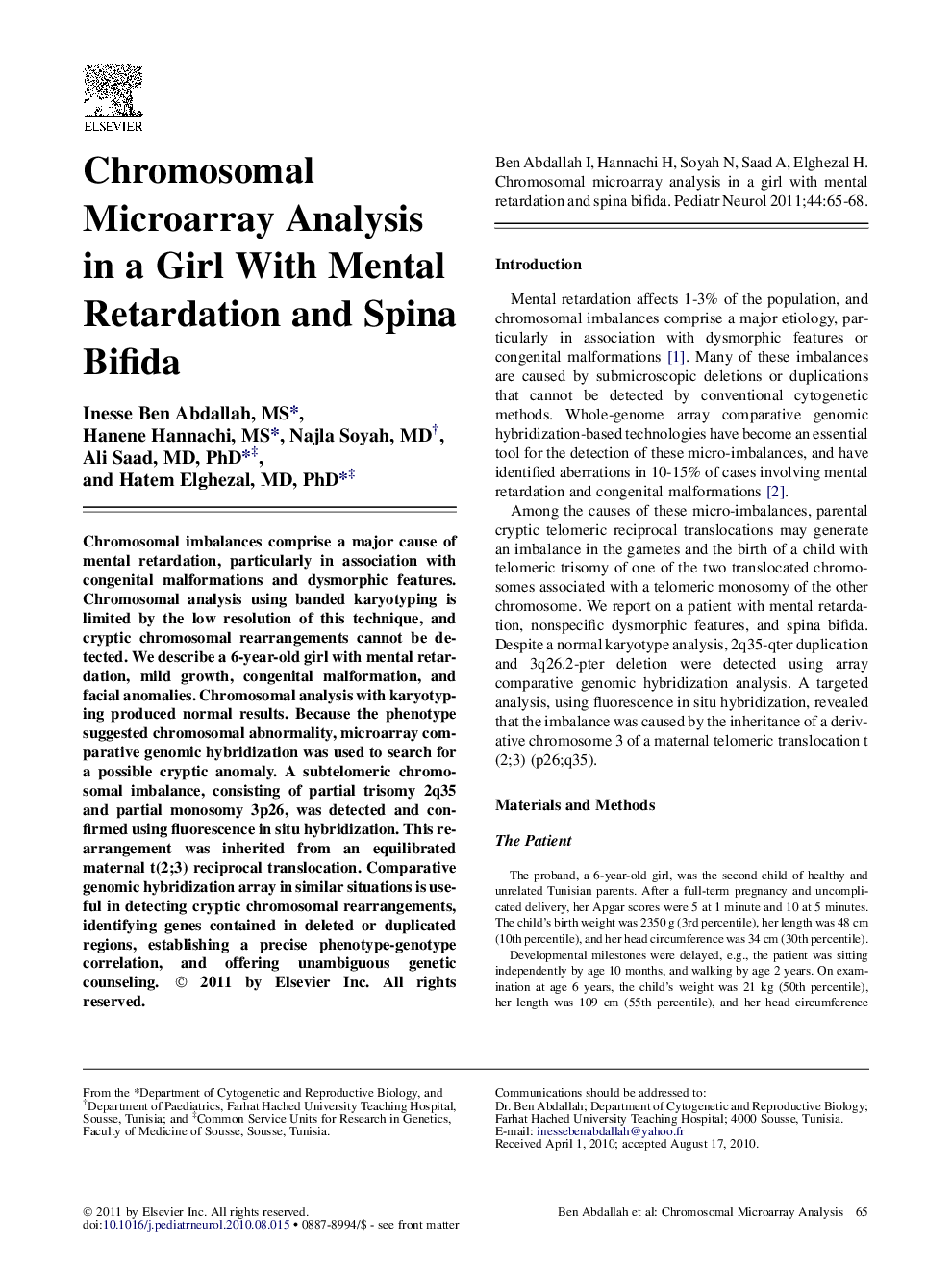| Article ID | Journal | Published Year | Pages | File Type |
|---|---|---|---|---|
| 3085908 | Pediatric Neurology | 2011 | 4 Pages |
Abstract
Chromosomal imbalances comprise a major cause of mental retardation, particularly in association with congenital malformations and dysmorphic features. Chromosomal analysis using banded karyotyping is limited by the low resolution of this technique, and cryptic chromosomal rearrangements cannot be detected. We describe a 6-year-old girl with mental retardation, mild growth, congenital malformation, and facial anomalies. Chromosomal analysis with karyotyping produced normal results. Because the phenotype suggested chromosomal abnormality, microarray comparative genomic hybridization was used to search for a possible cryptic anomaly. A subtelomeric chromosomal imbalance, consisting of partial trisomy 2q35 and partial monosomy 3p26, was detected and confirmed using fluorescence in situ hybridization. This rearrangement was inherited from an equilibrated maternal t(2;3) reciprocal translocation. Comparative genomic hybridization array in similar situations is useful in detecting cryptic chromosomal rearrangements, identifying genes contained in deleted or duplicated regions, establishing a precise phenotype-genotype correlation, and offering unambiguous genetic counseling.
Related Topics
Life Sciences
Neuroscience
Developmental Neuroscience
Authors
Inesse MS, Hanene MS, Najla MD, Ali MD, PhD, Hatem MD, PhD,
